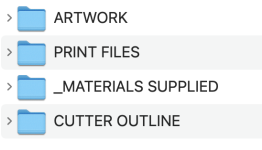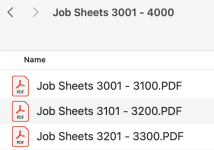Is there any standard practice for file naming / filing in folder and folder naming for the artworks?
What I can imagine is I make folders (in my PC) in the name of customers. e.g. cus 1, cus 2 etc. Next in tree would be folders named after jobs job 1, job 2 etc. In these job folders would be files. Should there be folders in between of dates? And how are files named when edited once, twice, thrice, so on, and when finalized?
What I can imagine is I make folders (in my PC) in the name of customers. e.g. cus 1, cus 2 etc. Next in tree would be folders named after jobs job 1, job 2 etc. In these job folders would be files. Should there be folders in between of dates? And how are files named when edited once, twice, thrice, so on, and when finalized?













